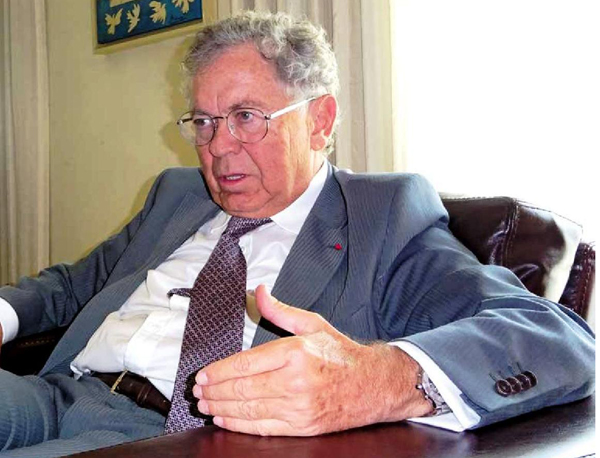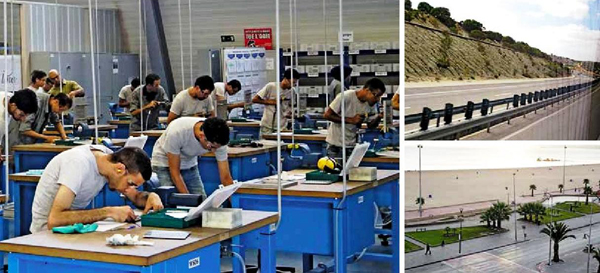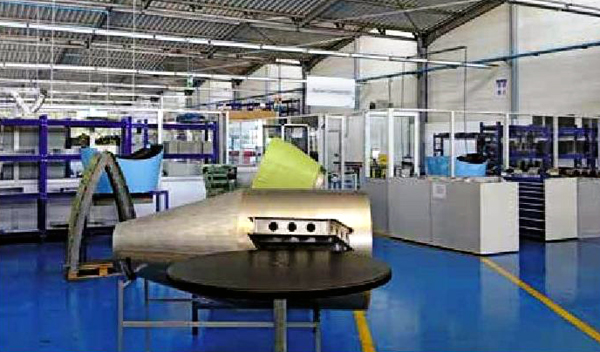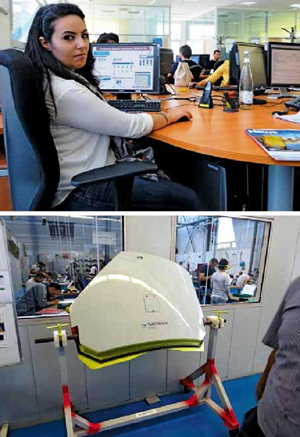| I
was the guest of a think tank for a seminar, and our host, former Foreign Minister
and Secretary General of the Assilah Forum Foundation (AFF) Mohamed Benaïssa pleasantly
reminded me that Morocco was the last bit of India; we look alike, share common
habits, bazars, and significantly, a lot of warmth in our hearts. Mr Benaissa
is certainly a winner with his knowledge of world affairs, friendly demeanour
and smiles overflowing from his heart. But Morocco has changed a lot in
terms of development. One big score in favour of this country is the emphasis
on infrastructure, for King Mohammed VI decided after taking over in 1999 that
unless there are good roads and stable supply of energy, there is no way towards
the future. About $20 billion are invested every year on infrastructure development,
and by 2020, the country plans to have 40 per cent renewable energy. The
design and quality of roads here will put many engineers in India to shame where,
just a few kilometres from the airport in the national capital of New Delhi, drivers
are stuck on the expressway, wasting time and fuel, and brand new roads have pockmarks
that cost the economy a lot by damaging vehicles and causing unnecessary pollution
in traffic jams. 
Morocco has become a hub for the industry from Europe, making cars and
even aircraft parts for European and US companies. To me, this was a surprise.
A French car maker plans to produce 20,000 cars at Tangier in this country. While
there, I was invited by the French technology and engine maker Safran, to visit
its units in this throbbing port city, and it was an eye opener to what possibly
the French companies can also do in India as part of offsets in aircraft deals
or howsoever. The engines for the Rafale aircraft that IAF is buying from France
for instance, are made by Safran, as also the engines for Boeing 737s and Airbus
A320 family (in collaboration with US GE). Mr Hamid Benbrahim el Andaloussi,
Safran national representative in Morocco and President of GIMAS (Groupement des
Industries Marocaines Aéronautiques et Spatiales) is the man single-handedly responsible
for creating the aerospace industry in Morocco. 
Somewhere in his eighties, the young and energetic Mr Benbrahim has
big dreams for aviation growth in his country. And he has no time, he says, to
wait for those dreams to mature. “In every project we have, we work against time,
and successful completion and operation. Time management is fundamental to every
project.” Skill, Scale and Speed are also his mantras – the same what the
Indian Prime Minister Narendra Modi has for his country. Safran will be
happy, he said, to partner with Indian companies as it wants to replicate some
of its success stories in India. There have been preliminary discussions with
India’s GMR group. Notably, besides providing engines for helicopters (Chetak
family) and aircraft (Mirage 2000), Safran has provided the software for India’s
Aadhar Unique Identity (UID) cards programme that the Indian Government is enrolling
every citizen in. 
Morocco had set up a free zone near Casablanca Port a few years ago, and
today, besides the seven group companies of Safran, others present there are Boeing,
UTC, Airbus, Daher, Zodiac Aerospace, Bombardier and several others making components
for European and US aircraft manufacturers, or giving them back-end support. Moroccans
speak French, and that comes to their advantage. Benbrahim, as he is known
popularly, observed that if a US company wanted to come to Europe, Casablanca
would be a better and economical base. “We are training people regularly at the
Institute of Aeronautics (IMA or Institut des Metiers de l’Aeronautique) and most
of the men and women passing out from there are easily absorbed by various aerospace
companies. “And we are just a few kilometers away from Europe with excellent air
and sea connectivity – and road, just after our containers cross the few miles
by ferry to Europe.” There is basic skill training in airframe assembly
parts, sheet metal working, composites, machining, electrical systems and wiring
and also in management and specific projects.  Thanks
to the good training, reverse thrusters – which help slow an aircraft for landing
– for some of the Airbus aircraft are made here at the Safran facilities for instance.
That this is happening at the edge of Africa, in an Arab country, is indeed a
matter of pride for the Moroccans, and impressive to discover for others. Thanks
to the good training, reverse thrusters – which help slow an aircraft for landing
– for some of the Airbus aircraft are made here at the Safran facilities for instance.
That this is happening at the edge of Africa, in an Arab country, is indeed a
matter of pride for the Moroccans, and impressive to discover for others.
A
former airline executive, Benbrahim said that Morocco initiated investments in
the aerospace sector some 15 years ago. Ever since, there has been an emphasis
on teaching technology to young men and women, and there are some 11,500 of them
in the aerospace workforce at present. As President of GIMAS, which promotes
the aviation industry in the country, he disclosed that he had signed an agreement
just this July-end with the Government to increase their number to 35,000 within
five years. The two ministers, Mr Mohamed Boussaid (Economy and Finance) and Mr
Moulay Hafid El Alamy (Industry, Trade and Digital Economy), who represented the
Government in the agreement, promised full support. Foreign companies are
expanding their production and support bases here, and all the newly trained personnel
should find jobs immediately, leading also to substantial growth in the country’s
economy. Safran, and other companies, provide equal opportunities to men
and women, and do their best to take care of their health and happiness. Some
of the units that I saw were absolutely neat and clean, built to global standards
to be part of the global supply chains. Trained Moroccan technicians can
even go out, particularly to the Gulf countries, and connect the industry there
with the industry in Europe through their skills on the one hand, and advantage
in Arabic and French languages on the other. Mr Benbrahim made a significant
observation: The global industrial supply chain is flat like a football field.
There is no religion, no race, no differences. You team together to win for the
best results with competitive technologies and competitive costs. |